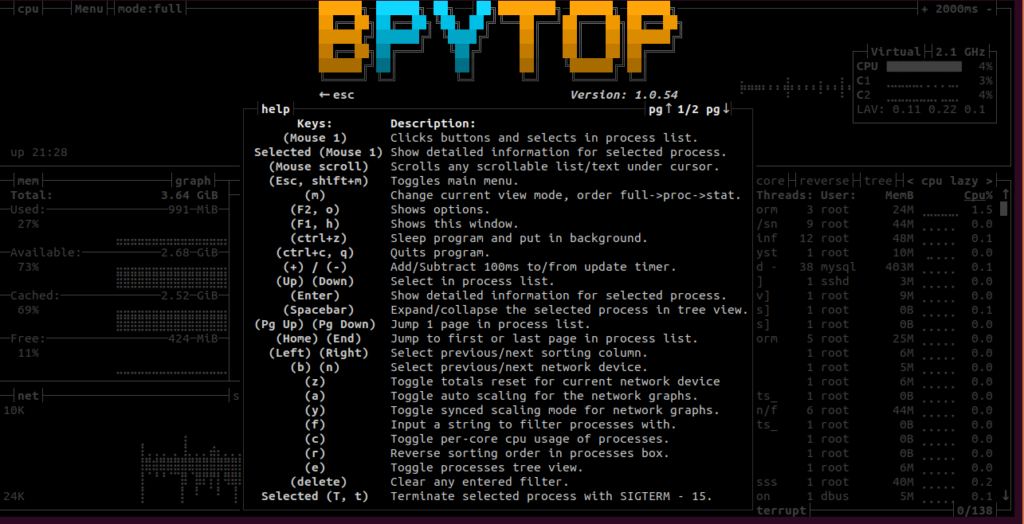Bpytop is a free and open-source resource monitoring tool written in Python. It is very similar to other monitoring tools such as top, htop, and bashtop and allows system resources monitoring in real-time, including disk, network, process, and CPU. Bpytop is cross-platform and can be installed on several operating systems, including, Linux, macOS, and FreeBSD. In addition, it offers a simple and user-friendly web UI, keyboard and mouse support, supports multiple filters, and many more.
This post will show you how to install and use the Bpytop resource monitoring tool on Oracle Linux 8.
Step 1 – Install Required Dependencies
Before starting, you will need to install some dependencies in your system. You can install all of them with the following command:
dnf group install "Development Tools" -y dnf install python3 gcc python3-devel -y
Once all the dependencies are installed, you can proceed to the next step.
Step 2 – Install bpytop Using PIP
There are several ways to install bpytop in your Oracle Linux system. First, you can use PIP to install bpytop to your system.
First, install the psutils package using the following command:
pip3 install psutil
Next, install bpytop with the following command:
pip3 install bpytop
Step 3 – Install bpytop from Source
You can also install bpytop by downloading it from GitHub and compiling it into your system.
First, download the latest version of bpytop with the following command:
git clone https://github.com/aristocratos/bpytop.git
Once the download is completed, change the directory to bpytop and compile it with the following command:
cd bpytop make install
Step 4 – Install bpytop Using SNAP Package Manager
You can also use the SNAP package manager to install bpytop on your system. First, install the SNAP package manager with the following command:
dnf install epel-release dnf install snapd -y
Once installed, start the Snap service with the following command:
systemctl start snapd
Next, run the following command to install bpytop:
snap install bpytop
Step 5 – Install bpytop Using Oracle Linux Repository
You can also install bpytop from the EPEL repository.
First, install the EPEL repo with the following command:
dnf install epel-release
Next, install bpytop with the following command:
dnf install bpytop -y
Once the installation is complete, verify the installed version of bpytop with the following command:
bpytop --version
Output:
bpytop version: 1.0.54 psutil version: 5.9.2
Step 6 – Working with bpytop
This section will show you how to use the bpytop utility to monitor system resources.
First, launch the bpytop command-line interface using the following command:
bpytop
You should see the following screen:
Press the ESC key to get the list of all commands and keyboard shortcuts. You should see the following screen:
Now, scroll down and select the HELP option. You will get a list of keyboard shortcuts on the following screen:
If you want to exit the bpytop resource monitor, press q on the keyboard.
Conclusion
The above guide taught you how to install and use the bpytop resource monitoring tool on Oracle Linux 8. You can now play around with different options and check the result. Try it on VPS hosting from Atlantic.Net!


